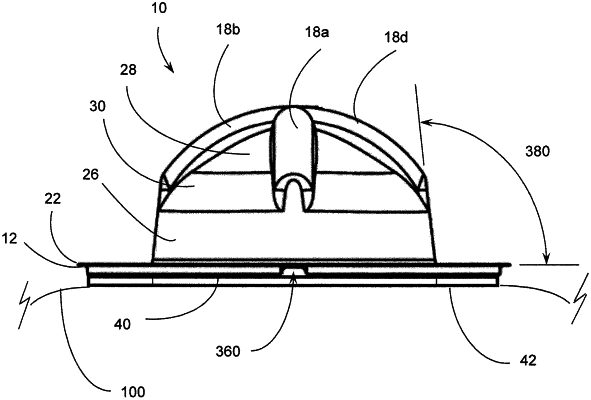| CPC A61F 5/56 (2013.01) | 19 Claims |

|
1. A device configured for deterring an undesirable sleeping posture in human subjects, the device comprising:
a dome;
a flexible annulus positioned at a base of and integrally formed with the dome, the flexible annulus having a substantially planar lower surface positionable in proximity to skin of a human subject in a region which will deter the human subject from maintaining the undesirable sleeping posture, the flexible annulus being configured to enable conformity relative to a contour of the skin; and
an adhesive layer comprising a top surface directly contacting the substantially planar lower surface of the flexible annulus and a bottom surface configured to directly contact the skin of the human subject, wherein the adhesive layer has an annulus shape generally corresponding to a shape of the substantially planar lower surface of the flexible annulus and is configured to adhere the flexible annulus to the skin of the human subject,
wherein the dome comprises a dome base wall, a dome intermediate wall, and a dome top wall, wherein the dome base wall is conical in shape from where it contacts the flexible annulus to where it meets the dome intermediate wall, the dome intermediate wall provides a generally smooth transition between the dome top wall and the dome base wall and is more convex than the dome top wall, and the dome top wall is convex and forms the apex of the dome, and
wherein a height of said dome is approximately 2 inches and is configured to create physical discomfort for the human subject by generating a force upwardly against the human subject when the human subject is in the undesirable sleeping posture with said dome oriented downward toward a sleeping surface.
|